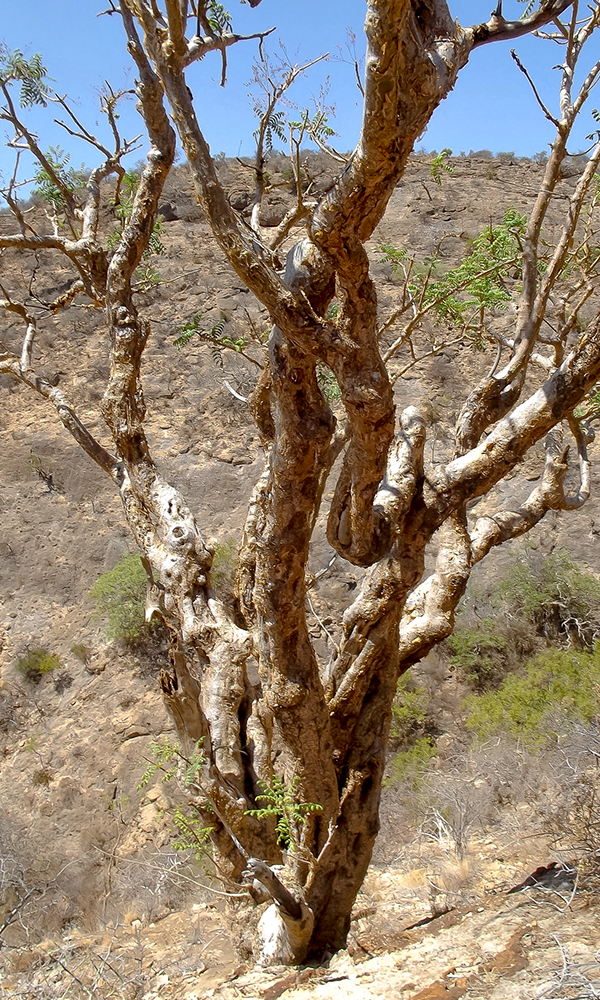To guarantee a responsible supply, we make sure of the legal compliance at every stage of the supply chain, from collection to export of plant raw material. Training in good harvesting practices is provided to collectors by our partner.

From tree to distillation
The frankincense gum trade is a traditional practice, thousands of years old, carried out by nomadic communities and networks. In Somalia, tapping takes place during the dry season, the trees’ vegetative period, when they no longer have leaves. Once the tree is incised, the collectors let the tree to exude its resin for 10 to 15 days and then harvest it 2 to 3 weeks later. The trees are then recut for another exudation. Once harvested, the frankincense gums are manually sorted by size and color and left to dry for 12 weeks. There are several qualities of frankincense that vary depending on the collection period, the tree’s age, the storage conditions, and the time allowed for sun-drying. We process the gum ourselves at our production center in Seville.
Albert Vieille and the CNRS (France’s national scientific research center) have collaborated to identify the molecules responsible for the characteristic smell of frankincense and a scientific article was published on the subject in 2016.
We ensure legal compliance at every stage of the supply chain, from collection to export of plant raw material. Training in good harvesting practices is provided to collectors by our partner.
Uses of frankincense essential oil
Used since the first perfumes, frankincense exhales in the heart of oriental accords to enhance woody notes. It adds a fresh facet to balsamic notes. Used in meditation, it calms nervous tension and promotes spiritual elevation. Anti-inflammatory and regenerating, the frankincense essential oil will take good care of your skin*.
About Frankincense
Frankincense is a gum resin produced by a shrub with compound leaves and secretory canals beneath the bark which, under hot conditions, naturally produce a gum resin. Frankincense trees are found in arid regions of the Horn of Africa and the Arabian Peninsula, most often in the foothills near the banks of the Red Sea.
* These aromatherapeutic properties are excerpted from specific works and are provided for information purposes only. They are not, under any circumstances, to be considered sufficient as a basis for any health claim or diagnosis for purposes of therapeutic application.